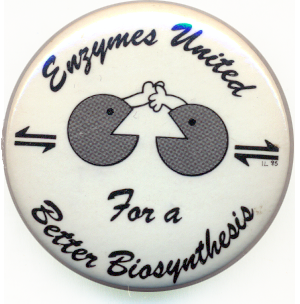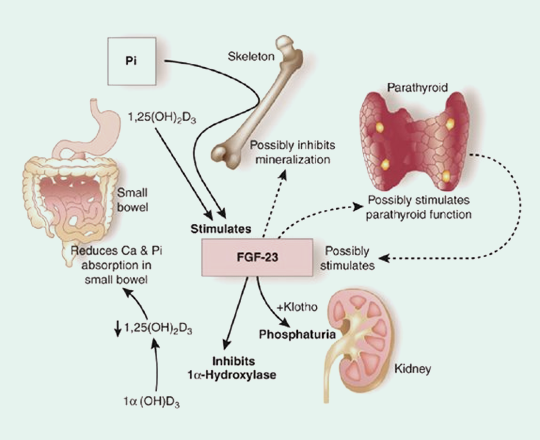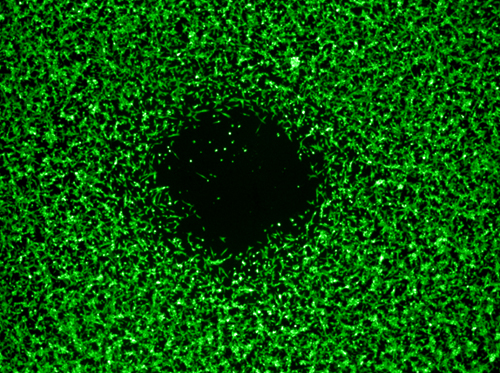Current Projects
Alzheimer’s and Parkinson’s Diseases
Alzheimer’s disease is a devastating neurodegenerative disease presently affecting as many as 5.1 million Americans; the prevalence of the disease increases radically after age 65. The Census Bureau has estimated that the number of people over 65 will increase by 2050 to 88.5 million; thus, Alzheimer’s disease presents an enormous future public health problem which has been recognized by Congress with the allocation of 300 million in additional NIH research funding each of the last two years.
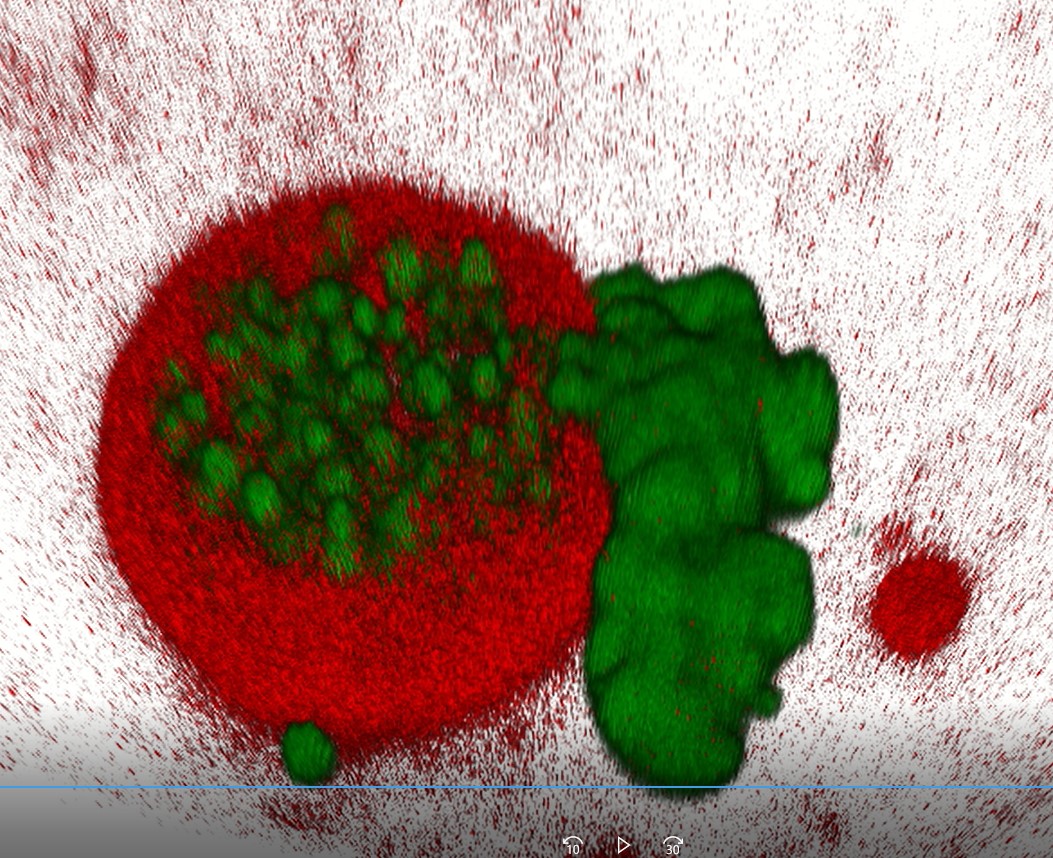
ProSAAS spheres encapsulate TDP-43 aggregates. This figure shows a 3D Z-stack confocal image of TDP-43-GFP aggregates (shown in green) entering a cyto-proSAAS sphere (stained in red).
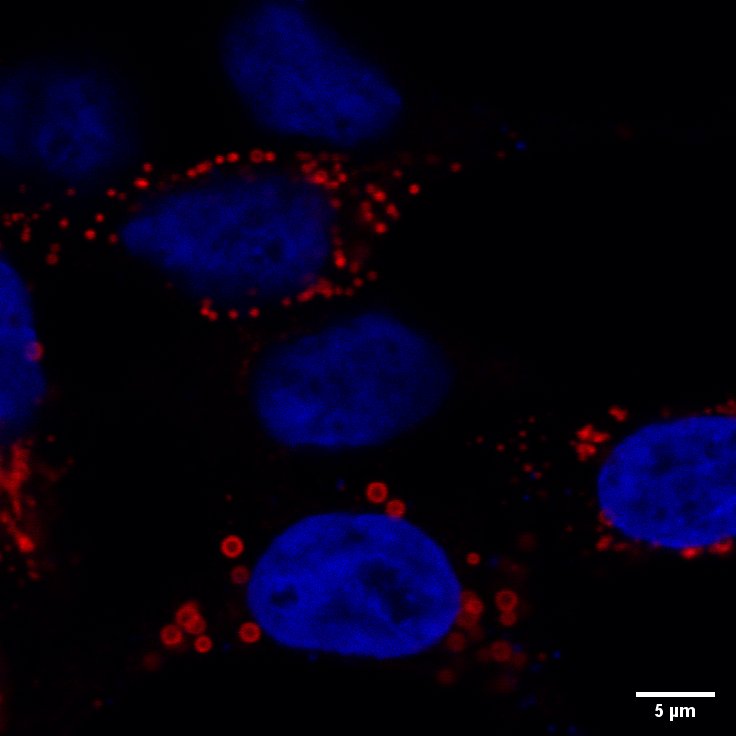
HEK cells contain cyto-proSAAS spheres. This confocal image shows overexpressed cyto-proSAAS (in red) which phase-separates into spheres (shown here as rings).
mCherry labelled cyto-proSAAS spheres grow and merge over time.mCherry-cyto-proSAAS (red) in the presence of untagged-cyto-proSAAS and TDP-43 GFP (green) phase-separates into spheres which grow and merge over time. Each frame represents 20 minutes.”
Alzheimer’s disease involves the aberrant aggregation of certain peptides and proteins such as Abeta and tau into insoluble formations within brain tissues: plaques and tangles respectively. Increasing evidence suggests that protein chaperones are involved in the formation and disposition of these insoluble aggregates. We are interested in the role of secreted brain chaperones, such as clusterin, 7B2, and proSAAS, in protein aggregation and segregation in neurodegenerative disease. The approaches used in this work range from immunohistochemistry of brain tissue from mouse models of Alzheimer’s, to primary neuron and cell line culture, to in vitro biochemistry, to behavioral assays of memory.
Parkinson’s disease. We are also interested in the effect of 7B2 and proSAAS on the formation of Parkinson’s disease protein aggregates, known as Lewy bodies, which arise from misfolded synuclein protein within specific brain stem areas that control movement. We have recently shown that proSAAS expression reduces the extent of cell death caused by synuclein overexpression in primary neuron cell cultures. Exciting preliminary data obtained by our collaborator Dr. Nigel Maidment (UCLA) indicates that virally-mediated proSAAS expression can reduce motor damage in a rat model of Parkinson’s disease.
Diabetes and Obesity
Diabetes, a disease of glucose misregulation, is increasingly prevalent both in the world population and in the US. The American Diabetes Association has estimated that in 2015 over 30 million Americans, or 9.4% of the population, live with this chronic disease, and up tp three times as many individuals are prediabetic. Certain forms of diabetes involve impaired synthesis of peptide hormones such as insulin and glucagon. These important signaling molecules are synthesized through the action of the proprotein convertsaes PC1/3 and PC2. We study the cell biology, the structure, and the regulation of these important enzymes, using Crispr-edited neuroendocrine cell lines as model systems. We have generated the naturally-occurring mutations in prohormone convertases which are associated with obesity, and have shown that inactivating mutations can lead to dominant-negative effects on peptide hormone biology in mice bearing only one mutant allele. We are now developing animal models that recapitulate human obesity mutations in an effort to better understand the cellular factors that underlie PC1/3-mediated obesity.
Biochemistry of Prohormone
Convertases
Establishing the three-dimensional structure of the prohormone convertases. Using recombinant protein expression we can produce milligram quantities of recombinant convertases, as well as of their two endogenous binding proteins. Our work on mouse furin resulted in the publication of the structure of the first mammalian convertase in mid-2003 (Henrich et al, Nature Structural Biology 10,520-526). We have recently made substantial progress in obtaining recombinant convertases and would now like to obtain the structure of a convertase-inhibitor complex (PC2 and 7B2). This structural work is vital to understanding the control of peptide hormone production, and could eventually lead to the design of new therapeutics.
Model of the Furin Substrate Binding Site, Courtesy of Stefan Henrich and Manuel Than
